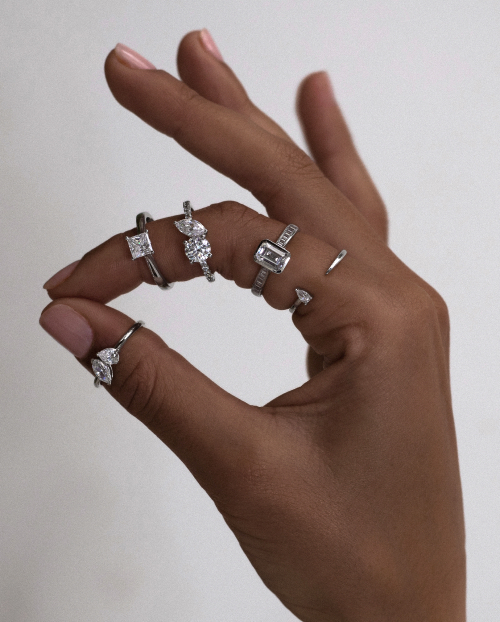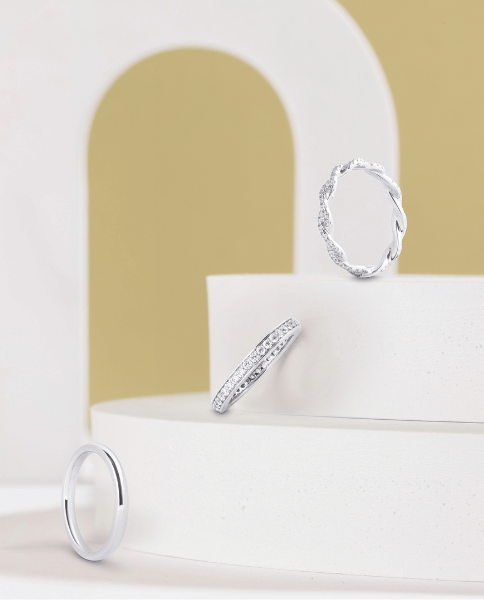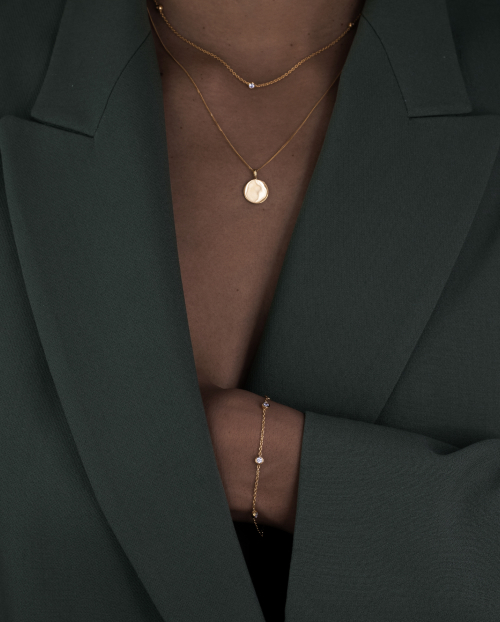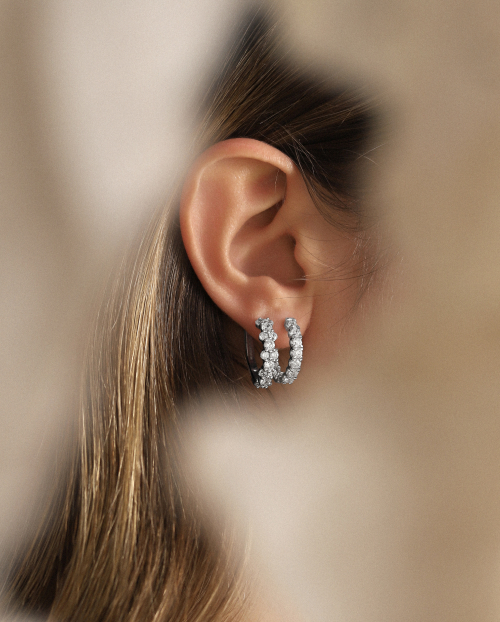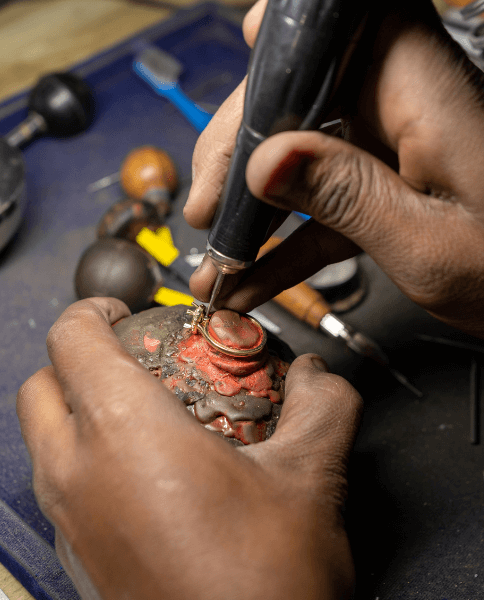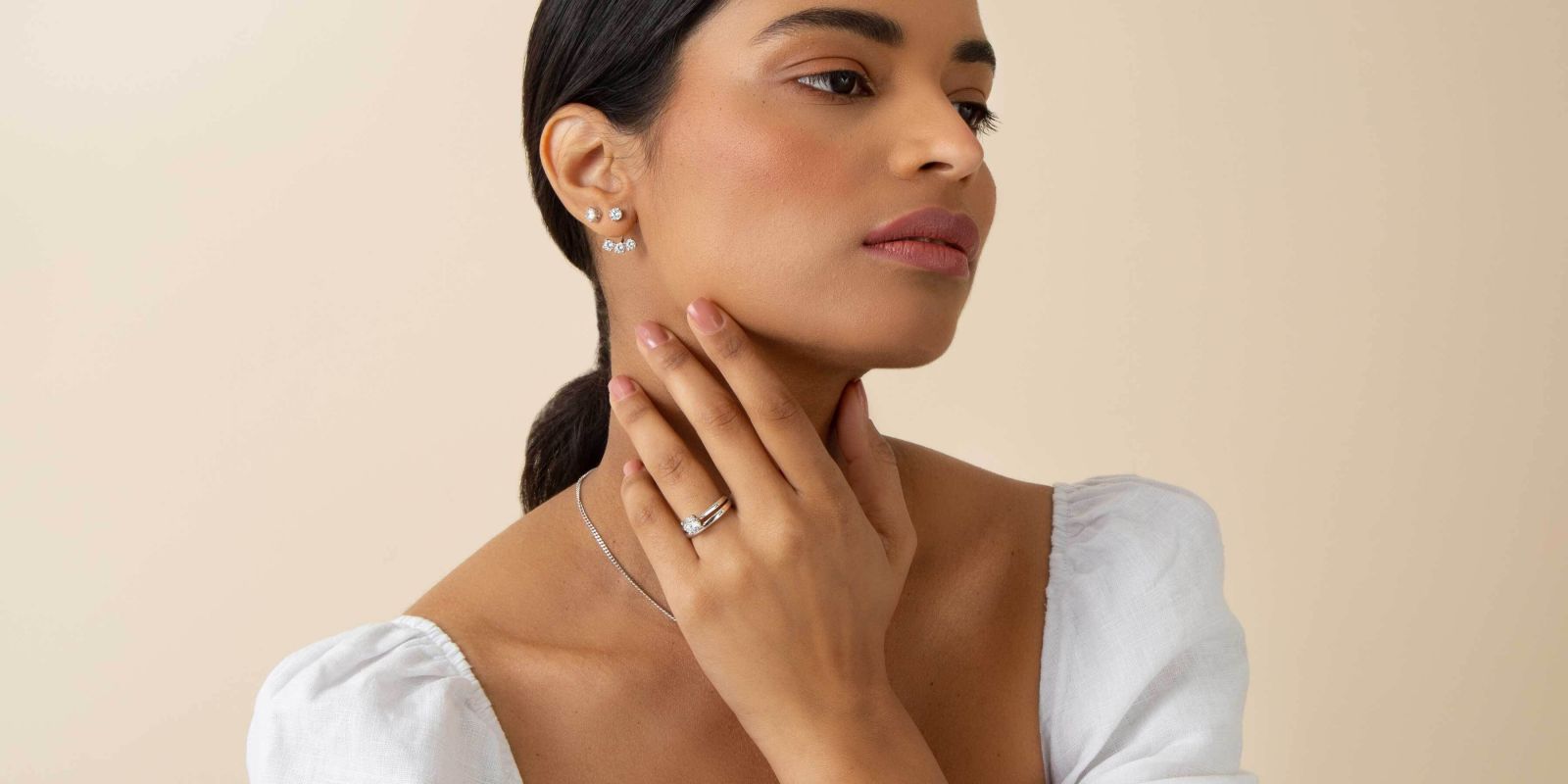How to Select the Perfect Engagement Ring
How to Choose an Engagement Ring?
Finding the perfect engagement ring is never easy. You want it to be more than just an accompaniment to the question but an embodiment and reflection of your true feelings.
One of the key choices you have to make when selecting an engagement ring is to pick a diamond. At Sacet we are only using lab grown diamonds and we'll dig more into their characteristics.
So, let’s get started.
What is a Lab Grown Diamond?
Lab grown diamonds, also referred to as cultured, created or synthetic diamonds are produced in a controlled laboratory environment using advanced technology to replicate the natural process of crystallizing carbon into dazzling diamonds.
These laboratory-grown diamonds possess the same chemical and physical characteristics as natural diamonds, making them chemically, optically, and physically indistinguishable from diamonds extracted from the earth.
Not only do they provide a sustainable and ethical alternative to mined diamonds, but they also come at a more affordable price point without compromising quality making them a great choice for an engagement ring.
There are a few major factors to take into consideration when selecting the lab created diamond rings. Keep reading to learn more and begin your search today!
The Four C’s - Clarity, Colour, Cut and Carat
1. Clarity
The majority of diamonds have small flaws or blemishes that affect clarity, mostly arising during the formation process by small splits called feathers. The greater the clarity, the greater the value, so keep an eye out for those special stones with pure clarity.
2. Colour
When it comes to colour, all diamonds are graded on a scale of D to Z, with D being the most desirable. The less colour (i.e. the purer radiance) a stone has, the better quality it is. Many diamonds on the market are flawed from questionable mining methods. However, the diamonds we use at Sacet are always of a premium-quality because of expert, lab grown techniques.
3. Cut
The cut of the diamond should also play a big factor when making your decision. The exquisite, handcrafted and symmetrical details of an expert team of jewellers leaves our diamonds with a richer and brighter glint. Have a search for a well-cut diamond that radiates light internally and externally, providing that extra special sparkle.
4. Carat
The one everybody focuses on. The carat is concerned with the weight of the diamond, and the larger the weight, the higher the value. While this is obviously important, carat doesn’t affect quality and can be an unwise way to look for the perfect ring as clarity, colour and cut are equally (if not more) important.
You can learn more about the 4 reasons to choose lab-grown diamonds.
Engagement Ring Styles
Finding the perfect style to match your partner’s tastes can be one of the trickier parts of searching for the ideal piece.
Whether it’s our solitaire, halo or vintage rings, Sacet has a curated catalogue of styles that compliment a variety of tastes. The correct type of metal also plays a big part in choosing a suitable style.
For example, the clear tones of white gold and platinum have a distinctly modern, luxurious feel, while rose gold tends to radiate a beautiful vintage quality. Nailing a faultless style that matches your partner’s tastes can make the difference when looking for the perfect lab grown diamond engagement ring.
Key Factors to Consider When Purchasing an Engagement Ring
It's important to note that lab grown diamonds are often more cost-effective than natural diamonds. However, a lab diamond engagement ring can still be one of the bigger purchases a person makes in their lifetime, making it important to know how much you want to spend before you start shopping.
Let us understand some of the key factors to consider when choosing a lab grown diamond engagement ring.
1. Certification
Lab diamonds do come with certification; this is how you can ensure their grading in each of the 4 C’s categories. Always insist on a reliable diamond grading certificate to ensure transparency and authenticity. Reputable jewellers should always furnish you with this documentation.
2. Lab Grown Diamond Ring Design
When it comes to crafting your ring, you have the option to personalise the design of diamond engagement rings, allowing them to mirror your distinctive preferences. Lab grown diamonds offer flexibility in setting styles, ranging from vintage to modern, freeing you from the constraints of a single design. Invest time in selecting the perfect setting and band style that aligns with your individual style, lifestyle, and budget.
3. Warranty and Return Policy
Given the significance of this purchase, it's essential to confirm that the seller offers a comprehensive warranty and a transparent return policy. This ensures peace of mind in the event of any issues. Additionally, consider checking if they provide resizing and regular maintenance services.
At Sacet, we want you to feel confident about shopping with us, and so we offer a 30-day returns policy. In the unlikely event that there is a manufacturing fault, we offer a Lifetime Manufacturing Guarantee, where we will fix your jewellery free of charge.
You can reach out to us for more details.
4. Reputable Seller
Buying an engagement ring from a reliable and well-established seller like Sacet known for delivering fine lab grown diamonds jewellery and outstanding customer service is crucial.
While lab diamonds are relatively new to the industry, their popularity has led to an increase in sellers. Conduct thorough research and select a provider with a proven history of offering lab diamonds for an extended period, demonstrating a deep understanding of the industry.
Choose your lab grown diamond engagement ring effortless with us
Diamonds really are forever when searching for the right engagement ring. Everyone has their own distinct and unique tastes, so we understand the difficulty in picking the perfect piece of jewellery when getting down on one knee. Our guide will help to make the perfect choice while selecting the diamond engagement ring to make your special moment even more perfect.
Browse our collection of engagement rings and make a perfect choice with us.














